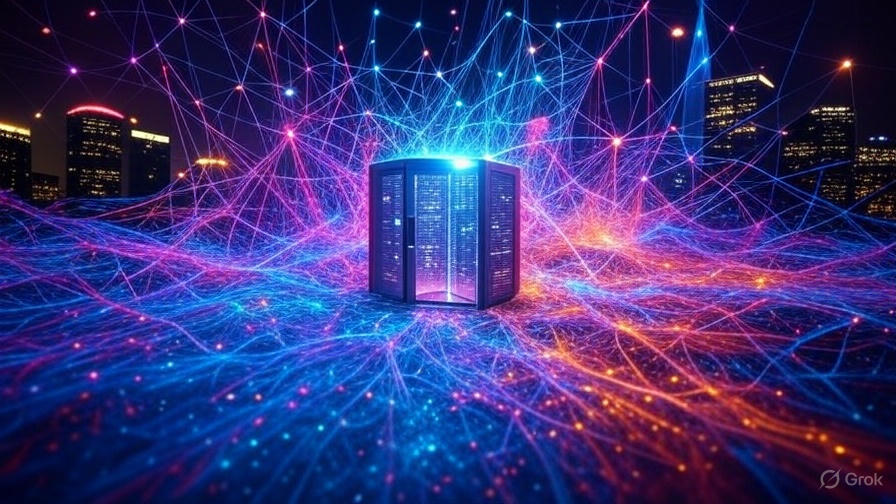How NVIDIA Became the World’s Most Valuable Company in the AI Boom
A step-by-step breakdown of how NVIDIA rose to the top, driven by GPUs, generative AI, and the global AI frenzy—explained in beginner-friendly terms.

Introduction
Imagine you're sitting down with a cup of coffee, curious about how a company you've maybe heard of in passing—NVIDIA—suddenly became the most valuable in the world.
As someone building a GenAI learning forum like Ragyfied.com, I love breaking down stories like this because they highlight the explosive growth in generative AI (GenAI) and large language models (LLMs). It's not just business news; it's a window into how AI is reshaping everything—from startups to DIY projects.
We'll start from the absolute basics, build step by step without skipping any logic, and dive deep into why this happened. Think of this as a beginner's guide to NVIDIA's rise, tied to the AI boom that's fueling innovative tools, solopreneur ventures, and even fun experiments like building your own RAG pipelines at home.
What Does "Most Valuable Company" Mean?
First, let's clarify what "most valuable company" means.
It’s not about cash reserves or physical assets like buildings and factories. Instead, it’s measured by market capitalization (or "market cap").
- Market cap = Total shares × Share price Example: If a company has 1 billion shares and each is worth $100, its market cap is $100 billion.
Share prices move up or down based on investor expectations—future profits, growth potential, and hype.
As of August 2025, NVIDIA’s market cap is around $4.34 trillion, putting it ahead of giants like Microsoft and Apple. This didn’t happen overnight—it’s the result of technology shifts, business pivots, and the global AI frenzy.
Back to Basics: CPUs vs GPUs
To understand NVIDIA, let’s revisit how computers work.
- CPU (Central Processing Unit): The "brain" of a computer, executing tasks sequentially. Think of it like a single chef cooking dishes one by one.
- GPU (Graphics Processing Unit): Specialized for parallel processing—many tasks at once, like a kitchen full of chefs cooking parts of the same meal together.
NVIDIA, founded in 1993 by Jensen Huang, started by making GPUs for video games.
Gamers demanded powerful graphics, and NVIDIA delivered—dominating 80–90% of the high-end GPU market. Their chips powered PlayStation consoles, PC rigs, and more.
The Key Pivot: GPUs Beyond Gaming
Around the early 2000s, researchers noticed GPUs weren’t just for graphics.
Scientific work like weather simulations or molecular biology models also needed parallel processing. NVIDIA seized the opportunity and, in 2006, launched CUDA—a software platform letting developers program GPUs for non-graphics tasks.
This move transformed GPUs into super-powered calculators for science and engineering.
Enter Artificial Intelligence (AI)
AI isn’t new—it’s been around since the 1950s. But the modern boom began in the 2010s with machine learning: teaching computers to learn from examples.
- Example: Show a kid thousands of cat pictures → they’ll recognize cats. That’s how ML works.
- Deep learning (a subset) uses neural networks, inspired by the human brain.
Training these networks requires massive datasets and huge compute power. CPUs were too slow, but GPUs? Perfect.
In 2012, AlexNet won an image recognition contest using NVIDIA GPUs, proving deep learning’s potential. Suddenly, Google, Facebook (Meta), and startups flocked to NVIDIA.
NVIDIA doubled down, adding tensor cores to speed up AI computations.
The GenAI Revolution
The real explosion came around 2022, with tools like ChatGPT (OpenAI).
Generative AI creates new content—text, images, code—using LLMs trained on vast internet data. Training these requires:
- Thousands of GPUs in supercomputers
- Each GPU costing $10,000–$40,000
- Weeks or months of compute
OpenAI (backed by Microsoft) reportedly used 10,000+ NVIDIA GPUs for GPT-3.
Why NVIDIA? Because of CUDA. Most AI frameworks—PyTorch, TensorFlow—are built around it. Switching to AMD or Intel would mean rewriting code, an expensive move.
Demand Surge: From Big Tech to DIY
During the AI hype cycle (post-COVID), demand exploded.
- Big Tech: Amazon, Google, Meta, Tesla invested billions in NVIDIA chips for cloud AI and self-driving.
- Startups: Solopreneurs fine-tuned LLMs for chatbots, while Anthropic and others raised big funding—all on NVIDIA clouds.
- Biotech: Drug discovery simulations leveraged NVIDIA GPUs.
- DIY Enthusiasts: On forums like Ragyfied.com, people experimented with RAG projects using consumer NVIDIA GPUs at home.
Business Transformation
The results were staggering:
- 2019 Revenue: ~$11B (mostly gaming)
- 2024 Revenue: ~$60B
- 2025 Revenue: Over $100B, with 80% from data centers (AI)
- Profit Margins: >50% (thanks to outsourcing manufacturing to TSMC)
Investors saw NVIDIA as the “pickaxe seller” in the AI gold rush—essential infrastructure for everyone building AI.
Stock Market Impact
The optimism fueled NVIDIA’s stock price:
- Early 2023: $150 (post-split adjusted)
- Mid-2025: $170+, multiplying its market cap tenfold
Hype added fuel—Wall Street bets, endless tweets from influencers, and Jensen Huang’s charismatic keynotes positioned NVIDIA as AI’s backbone.
Risks & Challenges
Of course, risks remain:
- Competition from custom chips (Google TPUs)
- Possibility of an AI bubble
- Supply chain shortages
But the core logic is strong:
- Computers evolved to need parallel power.
- AI massively demands it.
- NVIDIA dominates that space.
That’s why, in August 2025, NVIDIA is the No. 1 most valuable company in the world.


